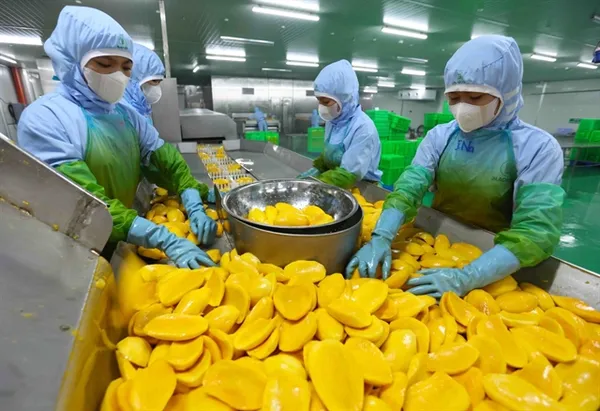 Economy
Economy

Việt Nam is at the top of the list of markets that could benefit from trade diversion coming from US-China trade tensions, building on its increasing competitiveness in manufacturing, according to Phạm Hồng Hải, CEO of HSBC Việt Nam.
 |
| Phạm Hồng Hải, CEO of HSBC Việt Nam. Photo courtesy of HSBC |
HCM CITY — Việt Nam is at the top of the list of markets that could benefit from trade diversion coming from US-China trade tensions, building on its increasing competitiveness in manufacturing, according to Phạm Hồng Hải, CEO of HSBC Việt Nam.
According to HSBC Global Research for the first quarter of the year, if an Asian economy captured 1 per cent of Chinese exports to US or 1 per cent of FDI into China, its GDP would increase significantly.
Việt Nam is on the top of the list with a potential increase of 1.2 per cent.
This was the advantage that Việt Nam could leverage to further boost trade flow across ASEAN, Hải said.
Hải also noted that the threat of macro-economic headwinds dragging global growth should be the impetus ASEAN needs to push its reform agenda harder in 2019.
“The year is already shaping up as one where the headlines will write themselves: markets second-guessing a return of policy tightening by the Fed, a Brexit deal or no deal, company downgrades from trade tariff uncertainty, and oil prices running roughshod,” he said.
“Amongst the bearishness, ASEAN remains one of the most optimistic and open regions in the world and in 2019 the region has the opportunity to further distinguish itself by continuing to drive reform and seek increased openness,” he added.
ASEAN economies can partly offset any trade downturns if the much-discussed supply chain diversion to Southeast Asia — from China, US and Korea — materialised, but the transition would be more widespread if the ease in which goods and services flow across ASEAN was enhanced, Hải noted.
With great fundamentals of a strong and open economy, Việt Nam remains an attractive investment destination for international businesses.
Last year, total foreign investment in Việt Nam reached US$35.46 billion with total disbursed capital increasing 9.1 per cent to $19.1 billion, marking 2018 as the sixth consecutive record year for foreign investment in Việt Nam, according to the Ministry of Planning and Investment.
To drive a more sustainable ASEAN, the region should focus on developing regional incentive frameworks and standards, which will increase cost effectiveness and the attractiveness of these financial instruments for corporations, he said.
He noted that it was also important to start converting the ASEAN Smart Cities Network – launched in April 2018 – from a concept programme into specific projects across 26 pilot cities.
In addition, it will be crucial to work with China, the US, Europe and Japan, which have all earmarked Southeast Asia for their sustainable development programmes, to push for bankable and transparent infrastructure projects that will generate commercial demand and, therefore, sustainable debt.
“Clearly, there is no shortage of priorities for ASEAN policymakers this year and continued integration of the region is crucial in the face of 2019’s challenging global backdrop,” Hải said.
“Businesses are crying out for tangible developments that will ease intra-regional trade, encourage international investment and create a sustainable future. So achieving more reform, integration and openness in 2019 will help the region both capitalise and shield itself from global events that are likely to play out over the coming years,” he added.
“Việt Nam has achieved great advantages as the fastest-growing economy (in the region) with a pro-growth government, and the country should continue the momentum to further integrate into the region and gain benefits from globalisation opportunities,” Hải said. — VNS




